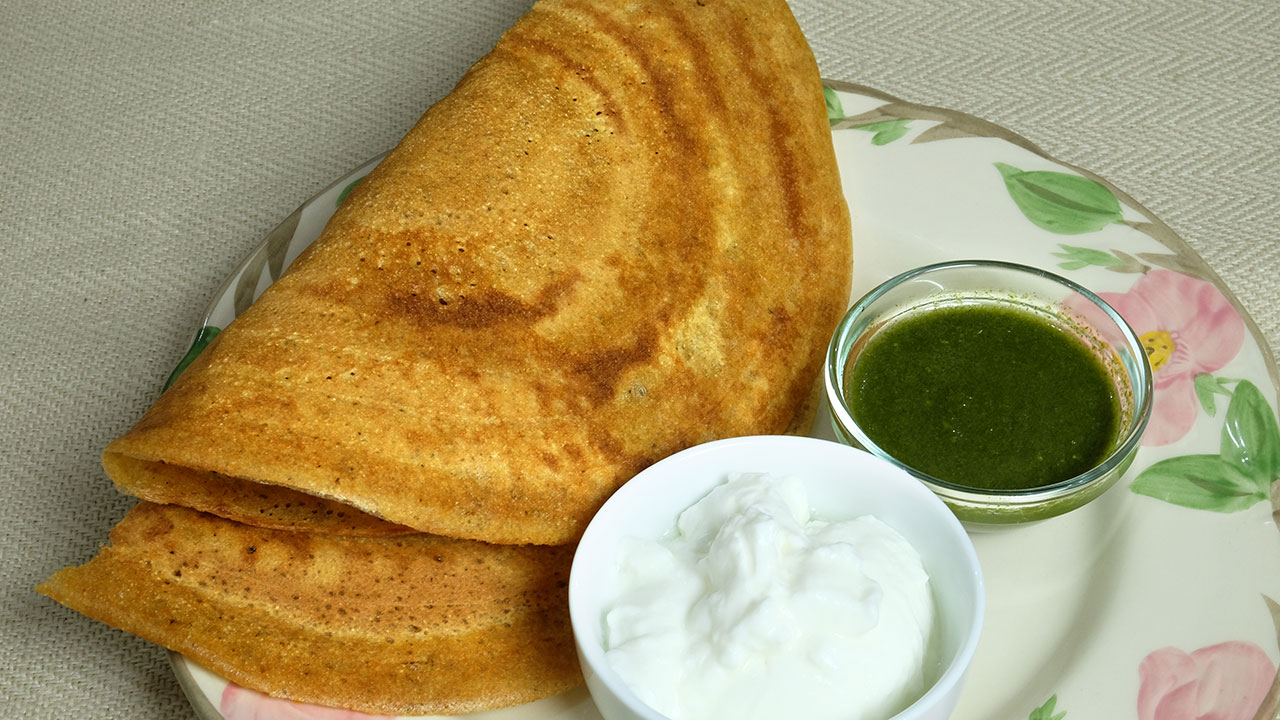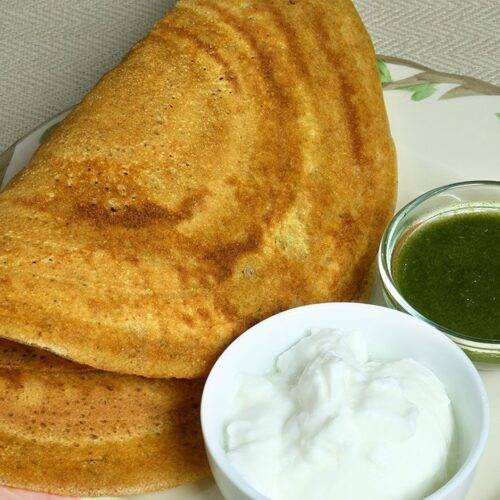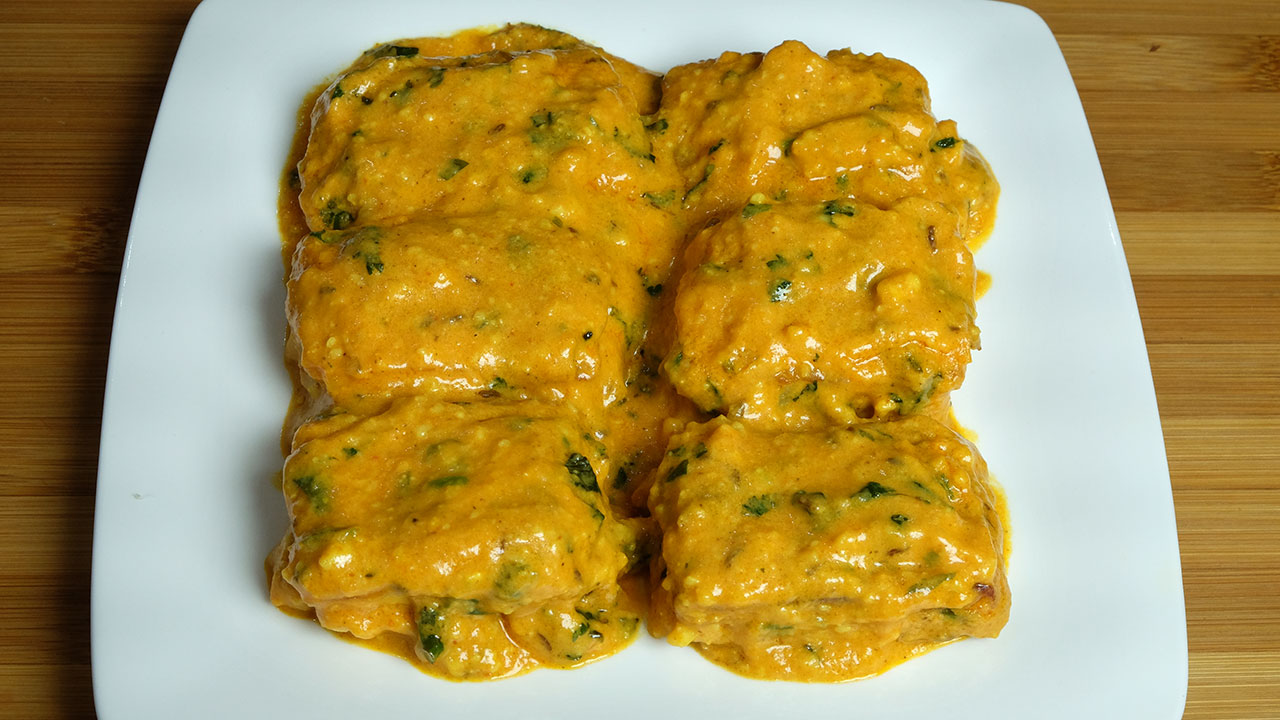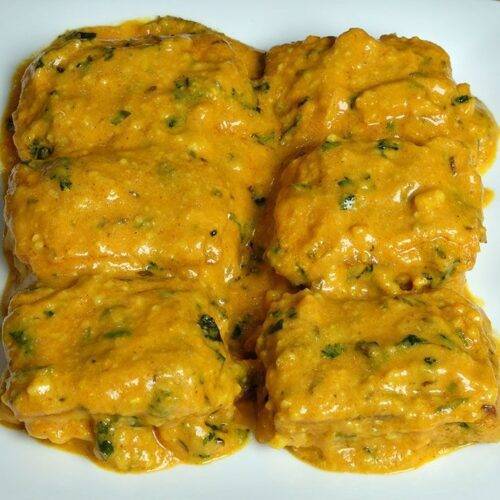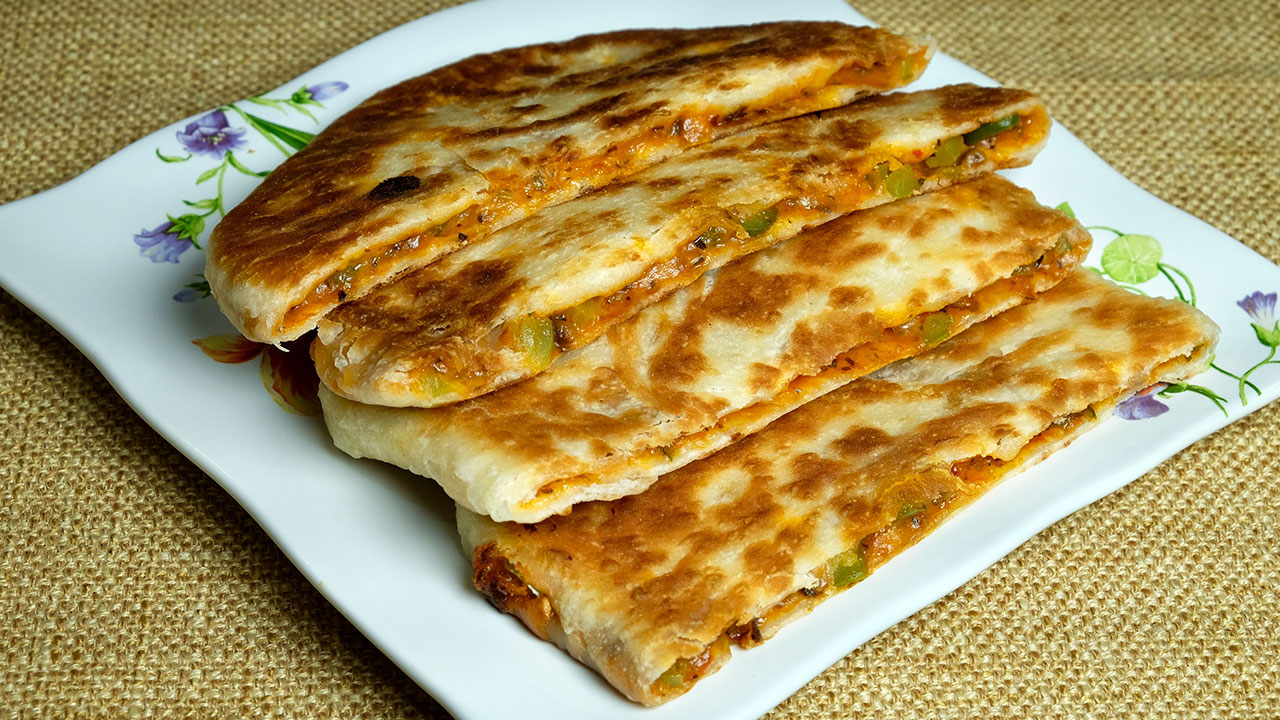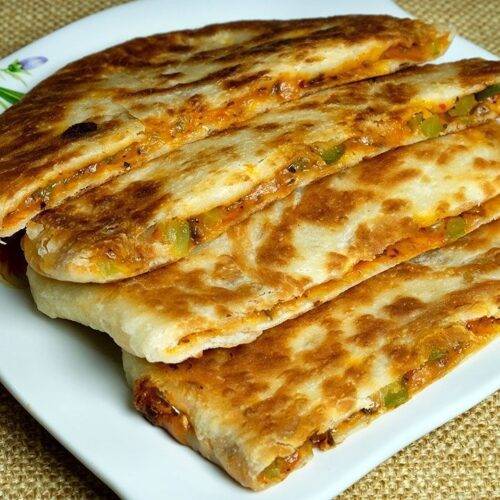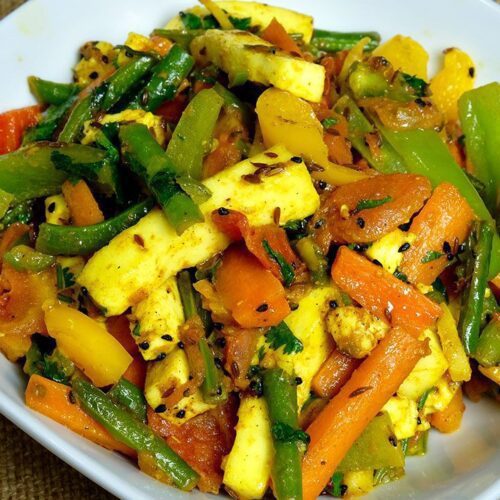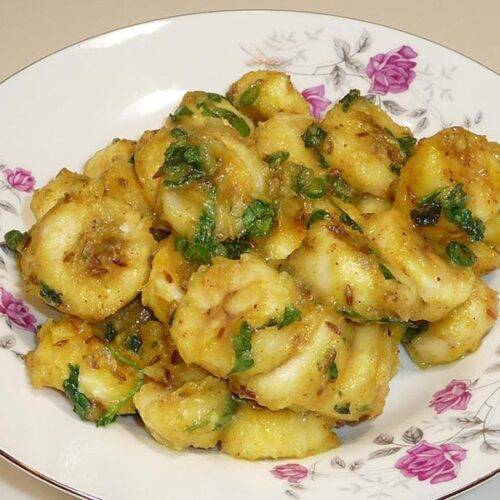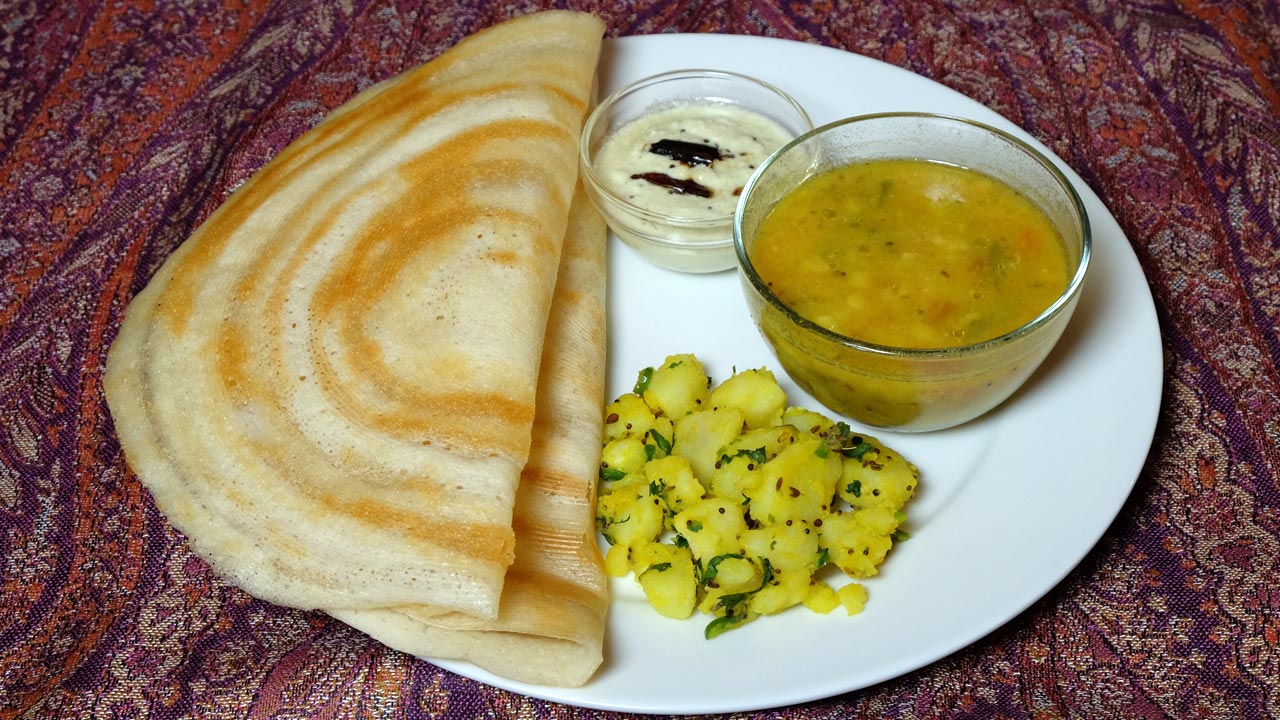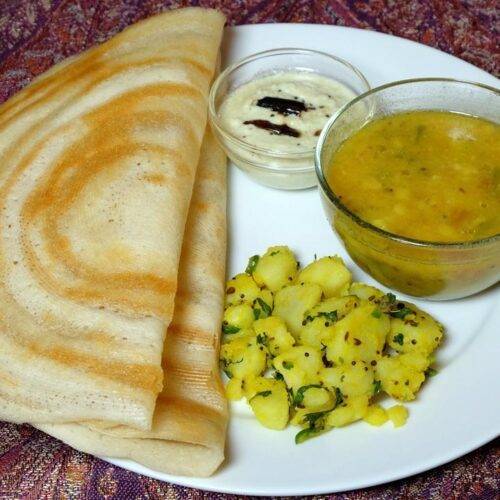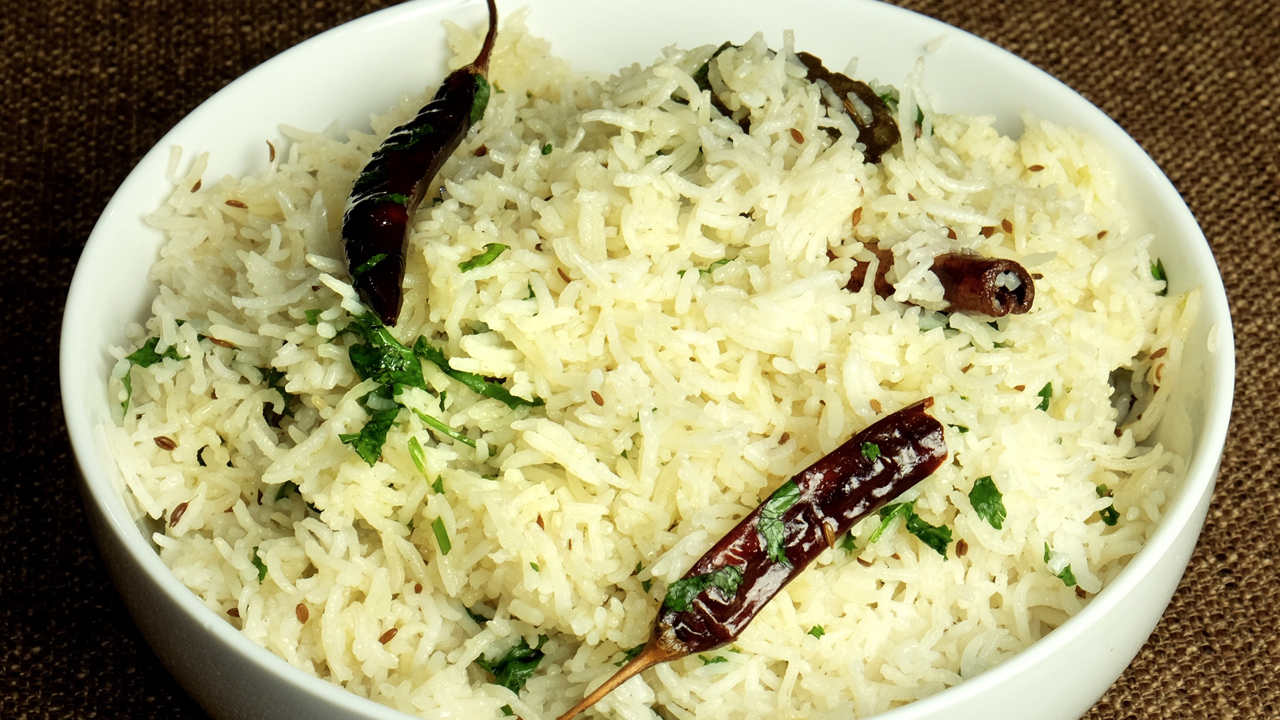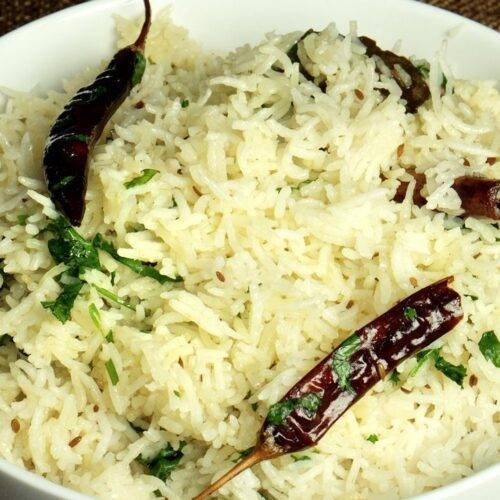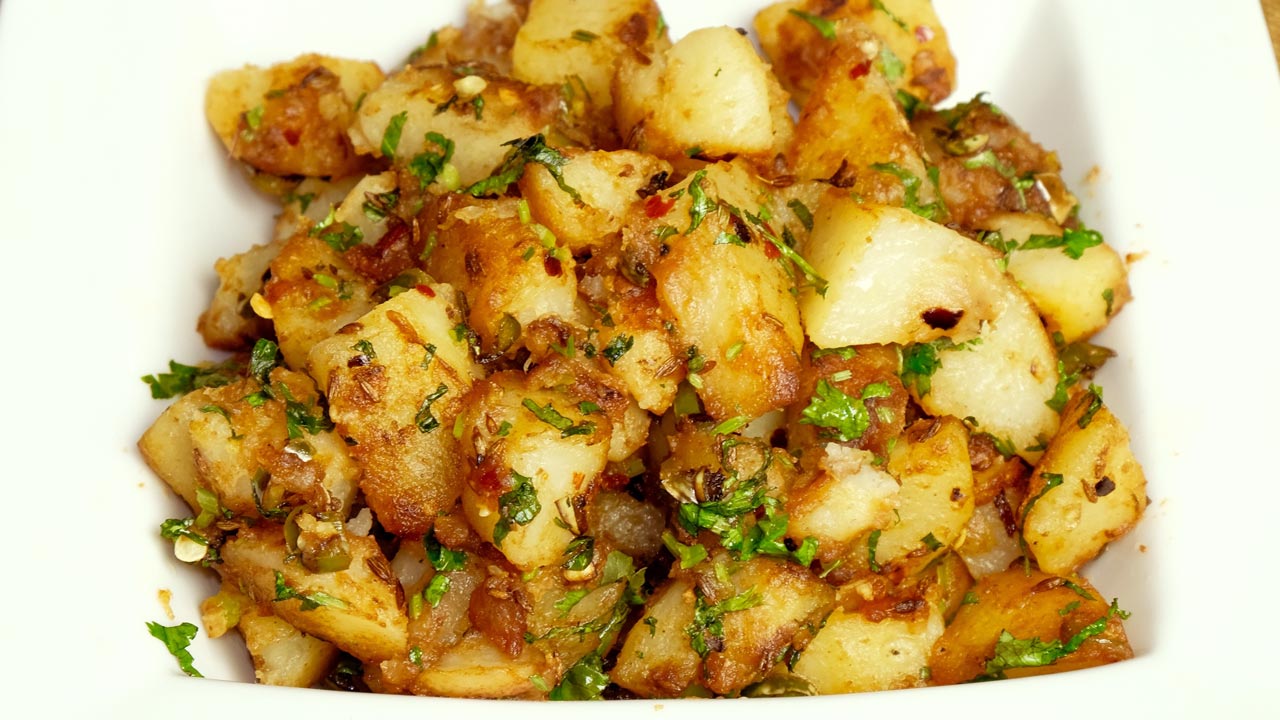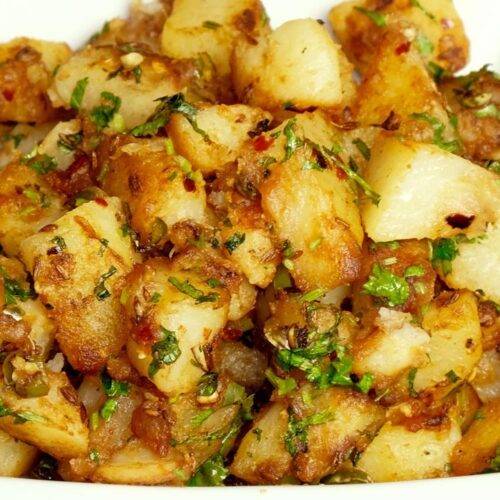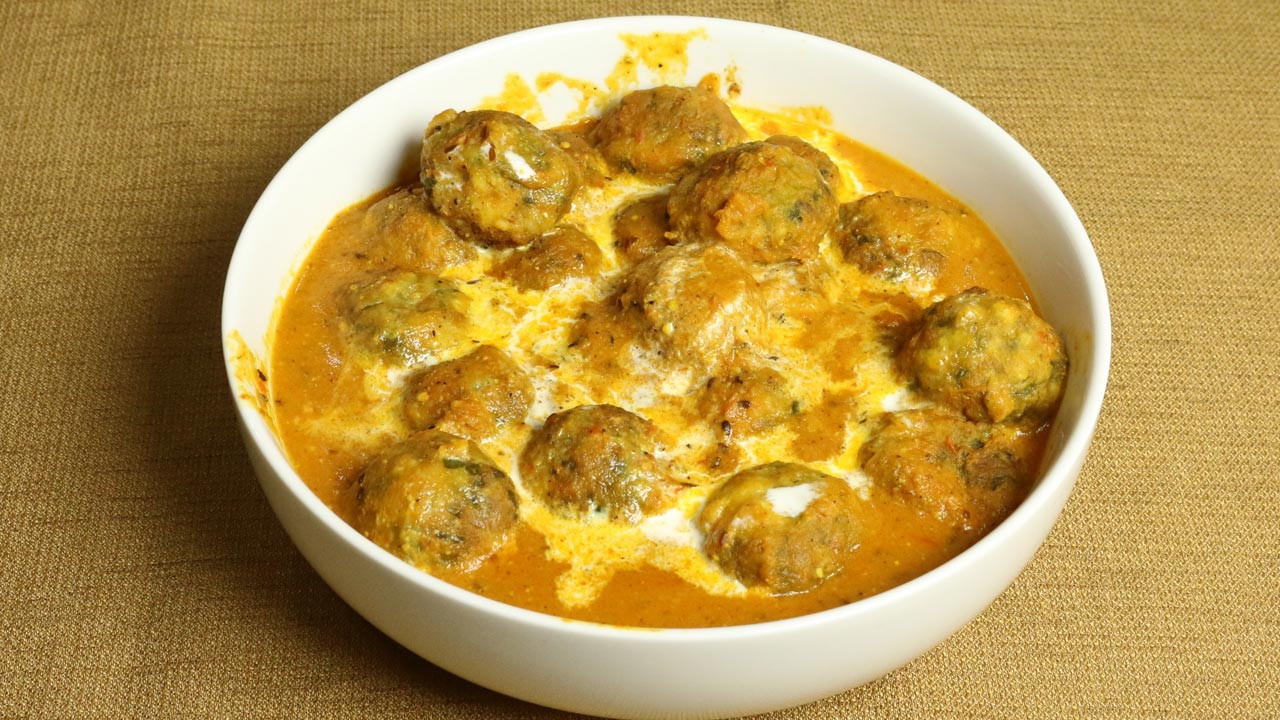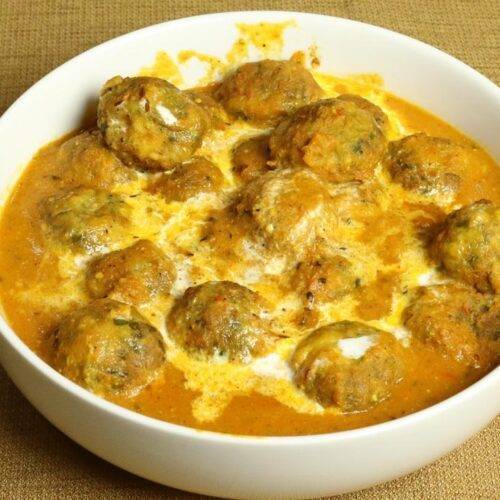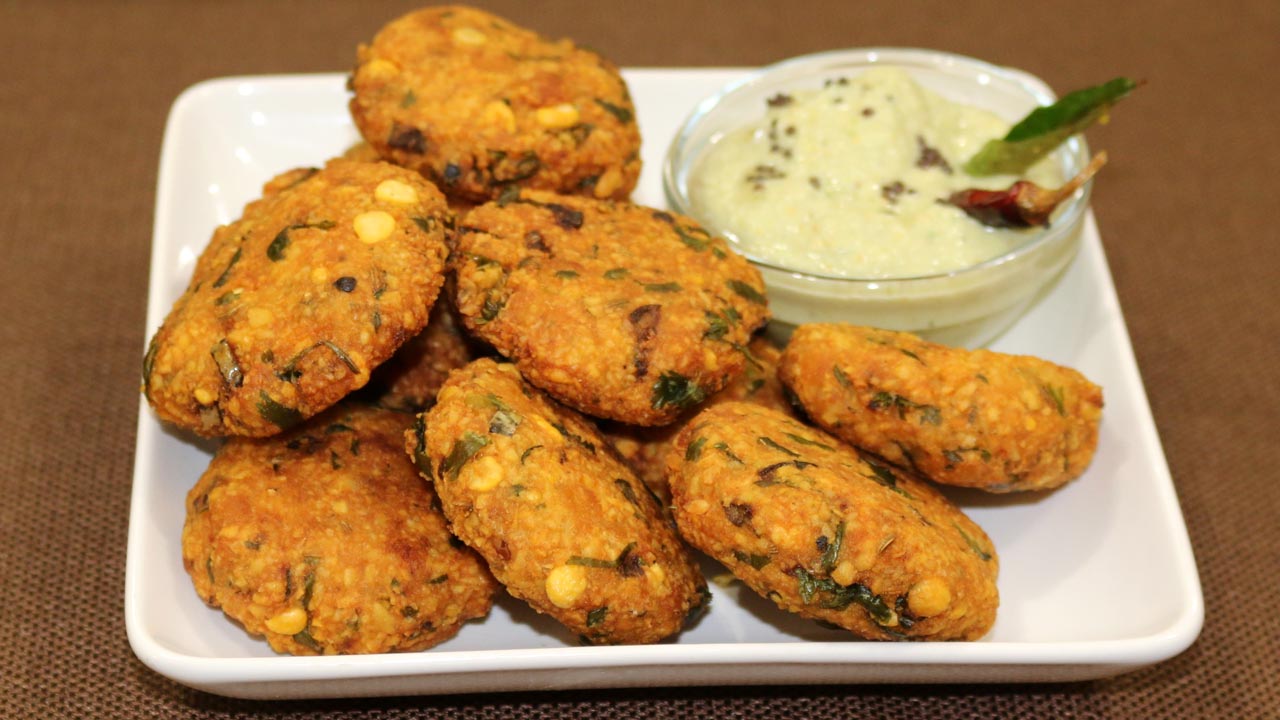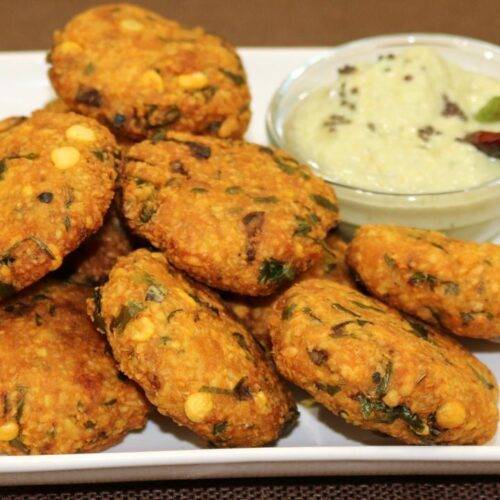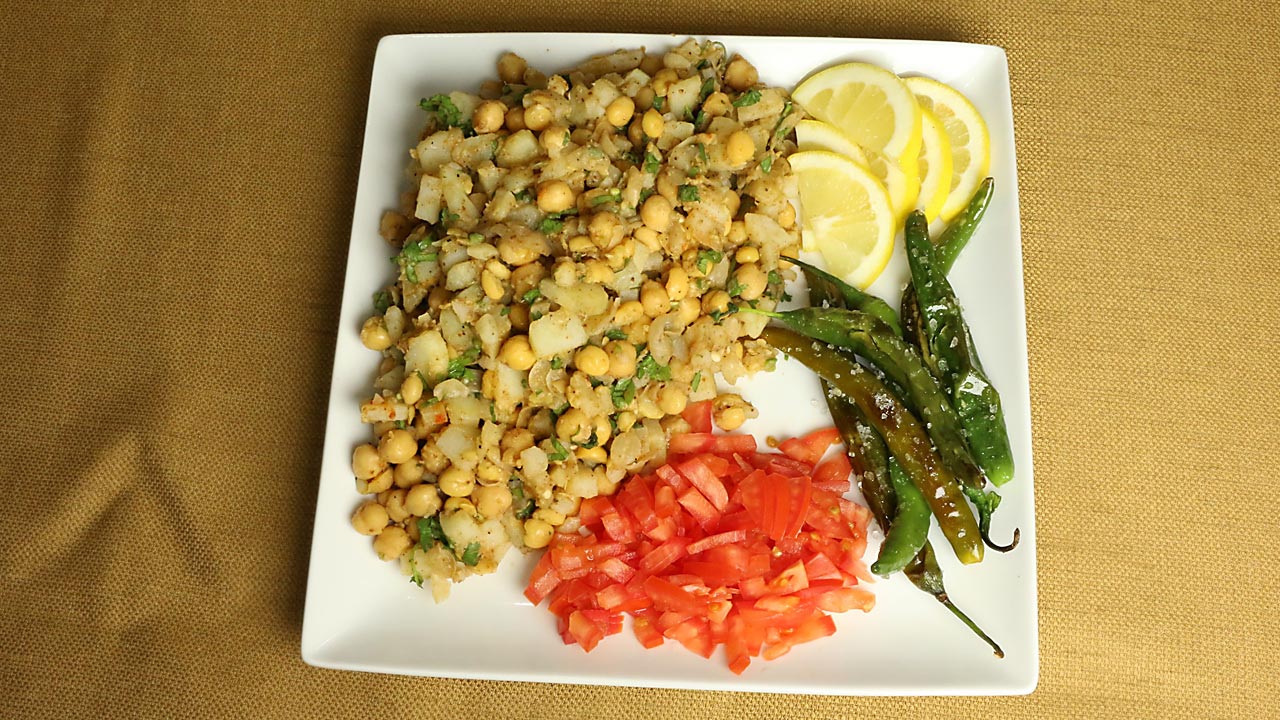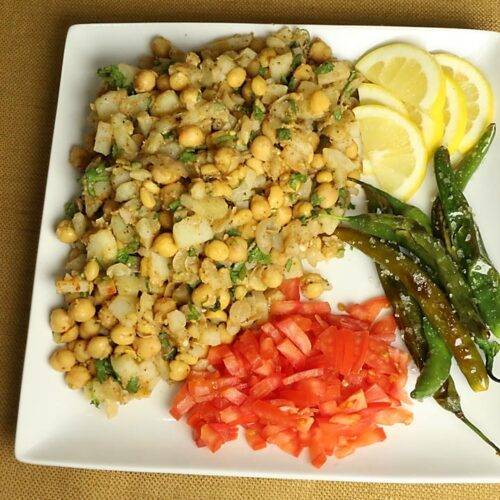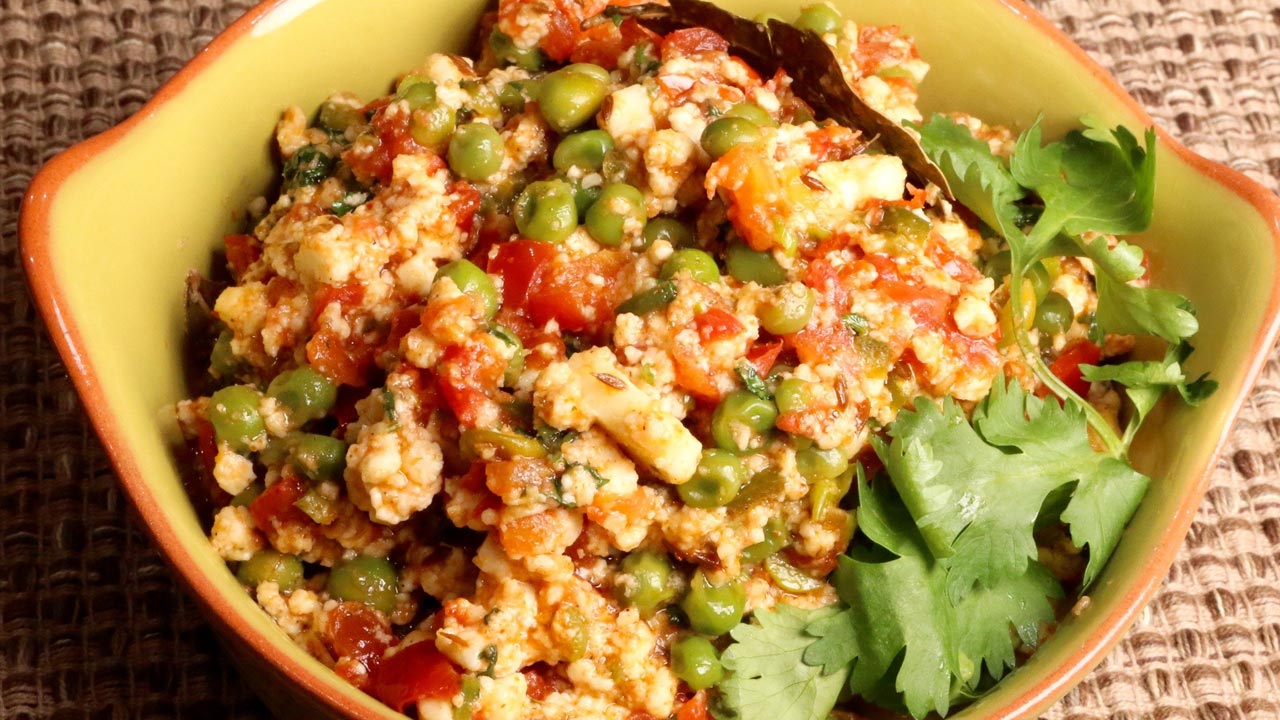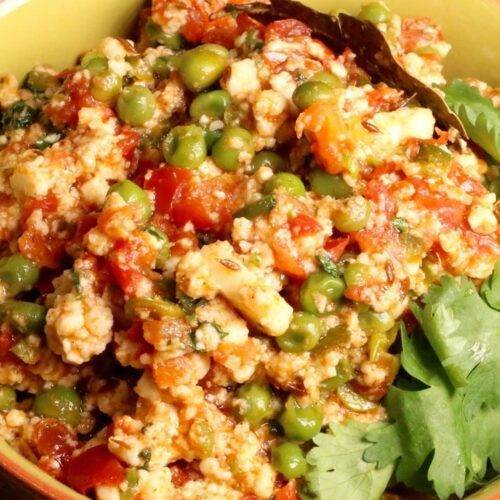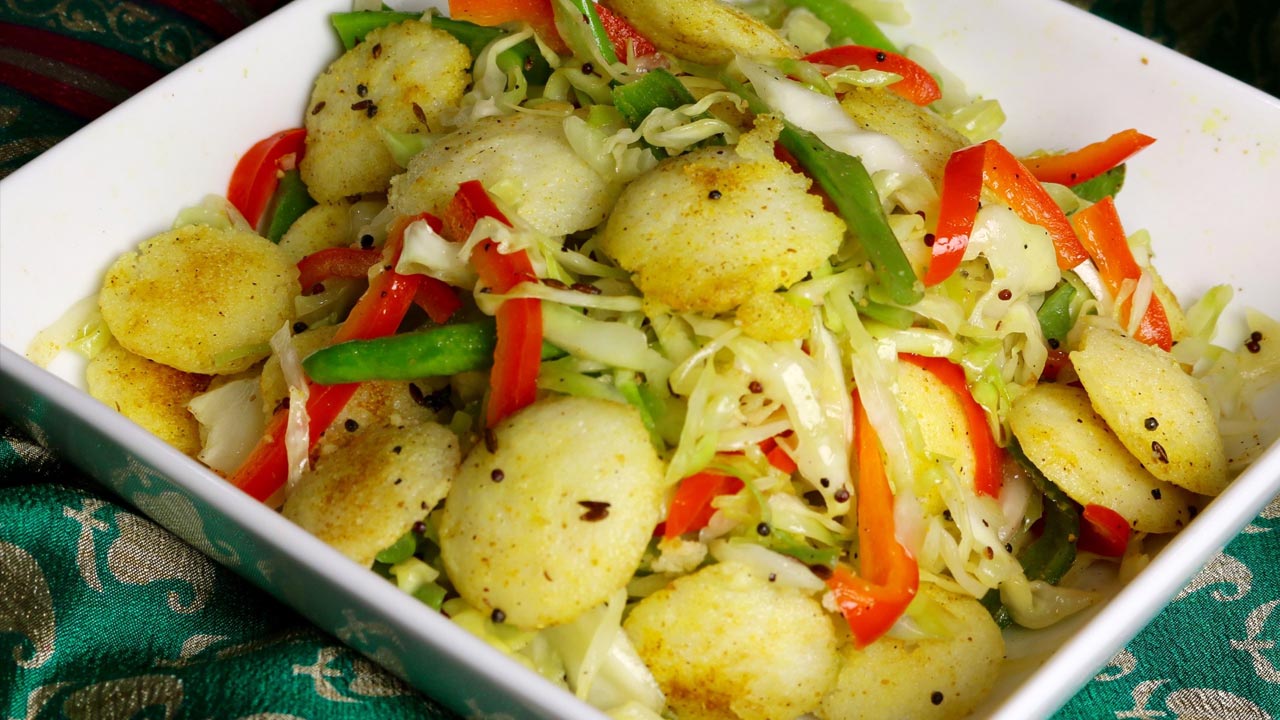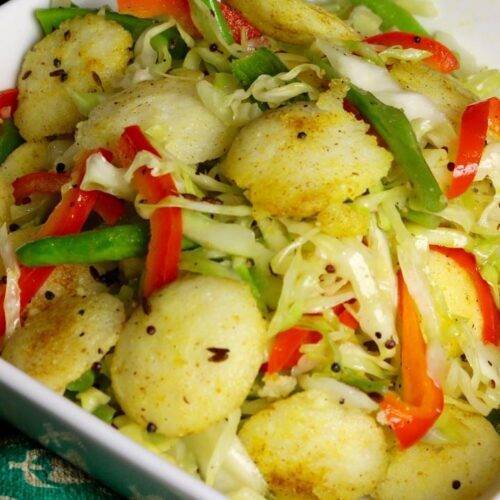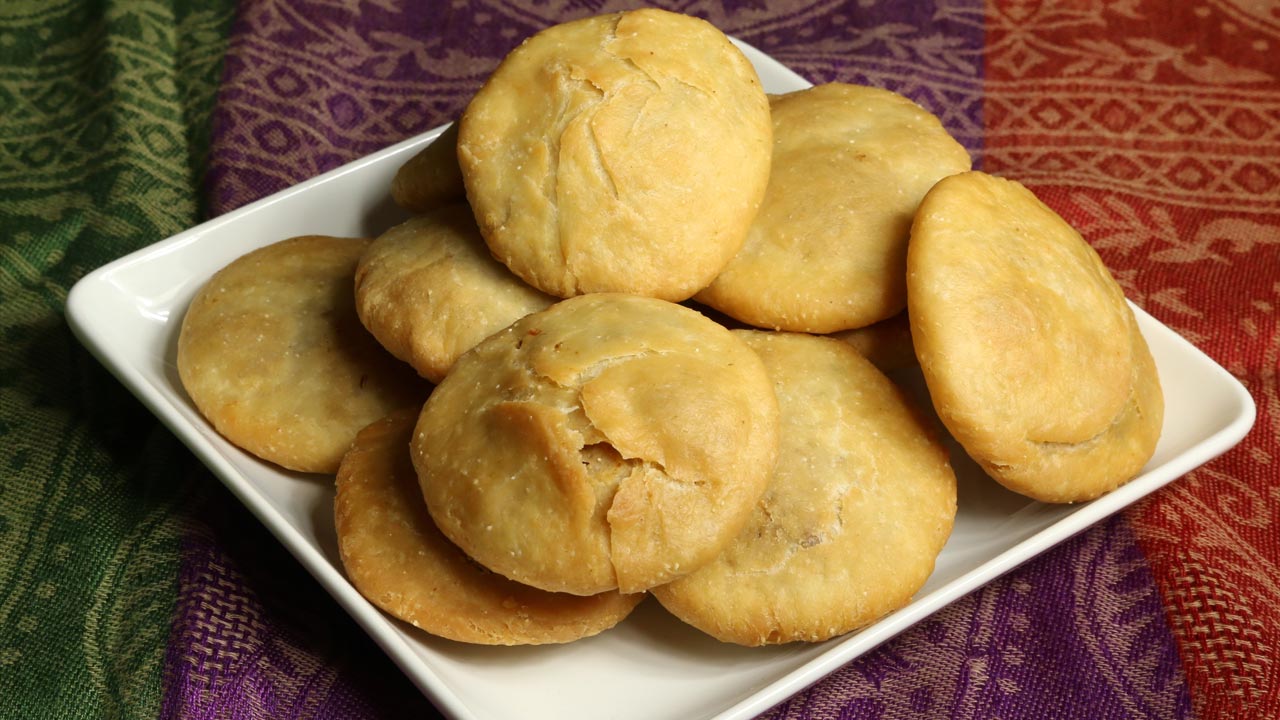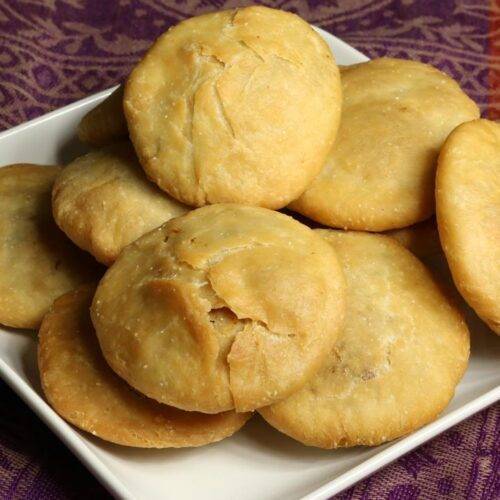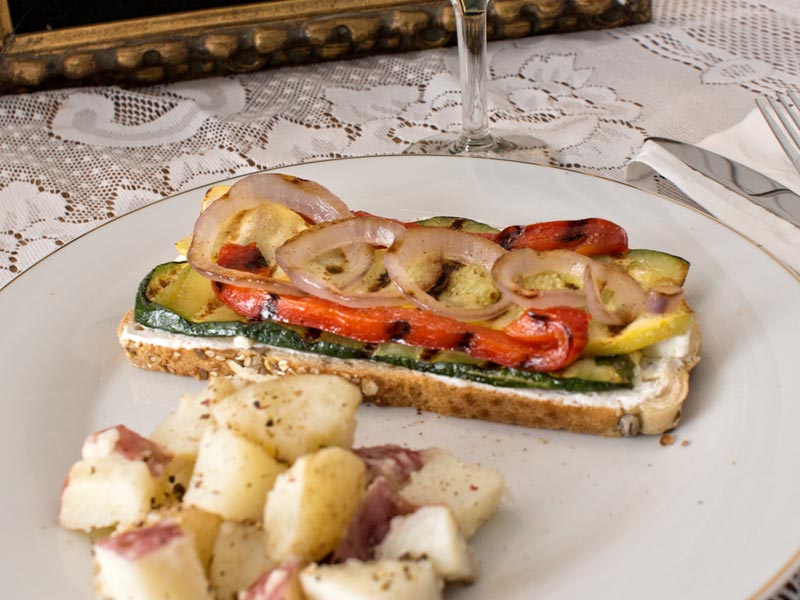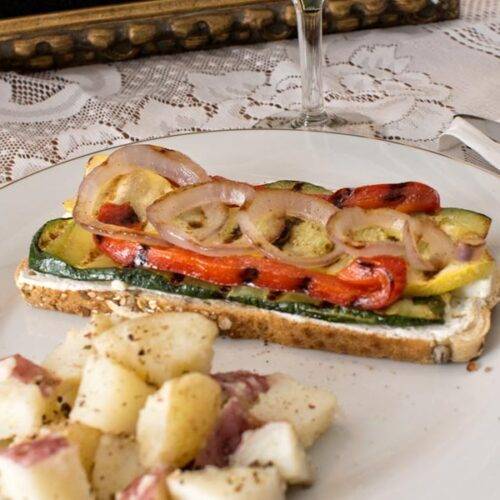Whole Wheat Dosa (Atta Ka Cheela)
Ingredients
- 1 cup whole wheat flour atta
- 2 Tbsp sooji fine semolina
- 1/2 tsp salt
- 1 tsp sugar
- 1 Tbsp oil canola or vegetable oil
- 1/4 tsp black pepper
- 1/2 tsp carom seeds ajwain
- 1/2 tsp baking soda
- 1-1/4 cups water
- 4 Tbsp oil for cooking canola or vegetable oil
Instructions
- Mix all the dry ingredients together, whole wheat, sooji, salt, black pepper, carom seeds, and baking soda, mix it well. Add water slowly to make a smooth batter, add water as needed, batter should be pouring consistency.
- Use a non-stick skillet and place on medium heat. Test by sprinkling a few drops of water on it. Water should sizzle right away. Wipe the skillet with moist towel.
- Pour 1/4 cup of the batter mixture into the center of the skillet and spread evenly with the back of a spoon. Starting from the center, spiral outward until evenly spread, about 7” inches in diameter thin circle.
- When the batter starts drying, smear about 2 teaspoons of oil over dosa, and cook till dosa turns golden brown in color. Flip dosa using a flat spatula, and cook for about 1 minute from other side until dosa is golden brown.
- Crispy Whole Wheat Dosa is ready, repeat with remaining batter. Every time wipe the skillet. that helps spreading the dosa.
Notes
- Whole wheat dosa is looking nice and crisp.
- You can use whole wheat dosa as eggless crepe.
Elevate Your Culinary Experience with Our Whole Wheat Dosa Recipe
Dosa is a popular South Indian delicacy that looks like a crepe. It’s like a crisp and thin pancake made of rice and urad dal batter. Traditionally Dosa is served with sambar, aloo masala, and coconut chutney. It is an Indian crepe made usually through rice batter, but here we have experimented and made many alternative dosa such as Oat Dosa, Besan Dosa, Rava Dosa, Sorghand um Dosa. This preparation uses whole wheat dosa and is a bread-based breakfast recipe that is vegan. The preparation entails skillfully combining pan techniques and manual dexterity to achieve the perfect bread cooked on non-stick skillets.
Creating the Whole Wheat Dosa Batter:
In the first step of the whole wheat dosa recipe, begin by meticulously blending all the dry components – whole wheat, sooji, salt, black pepper, carom seeds, and baking soda. Achieve a seamless amalgamation to ensure a well-balanced flavor profile. Gradually incorporate water into the mixture, stirring continuously until a smooth batter with a pourable consistency is attained.
Setting the Skillet for Whole Wheat Dosa:
The second step of the recipe for wheat dosa for making optimum whole wheat dosa requires initiating the cooking process with a non-stick skillet placed over medium heat. To gauge its readiness, conduct a water test – if droplets sizzle upon contact, the skillet is primed. To prevent sticking during cooking, maintain a skillet surface free of residue by wiping it with a moist towel.
Pouring and Spreading the Whole Wheat Dosa Batter:
The next step in the recipe for wheat dosa is the artistic phase of crafting a perfect whole wheat dosa by taking 1/4 cup of the batter and pouring it gracefully into the skillet’s center. Utilize the back of a spoon to delicately spread the batter, commencing from the center and spiraling outward. Strive for a delicate, 7-inch diameter circle to ensure the desired thinness and crispiness in the final whole wheat dosa.
Cooking and Flipping the Whole Wheat Dosa:
As the whole wheat dosa batter begins to set, introduce about 2 teaspoons of oil, spreading it evenly over the surface. Allow the dosa to cook until it transforms into a luscious golden brown. Employ a flat spatula to skillfully flip the dosa, ensuring an additional minute of cooking on the other side until a uniform golden brown hue is achieved. Repeat this process with each dosa, while adhering to the essential skillet-wiping ritual for consistent dosa spreading.
Finalizing the Whole Wheat Dosa Delight:
Celebrate the fruition of your culinary endeavors with the satisfying crunch of a well-prepared whole wheat dosa. Replicate the cooking process with the remaining batter, guaranteeing each dosa mirrors the deliciousness of the initial ones. Keep in mind the importance of diligently wiping the skillet after each use to facilitate uniform spreading.
Observations on Whole Wheat Dosa:
Appreciate the aesthetic appeal and delectable crispiness that the whole wheat dosa brings to the table, making it an ideal choice for a wholesome and delightful meal. Explore the versatility of this whole wheat dosa by incorporating it seamlessly into your culinary repertoire as an eggless crepe alternative, enhancing your dining experiences with its wholesome goodness.

